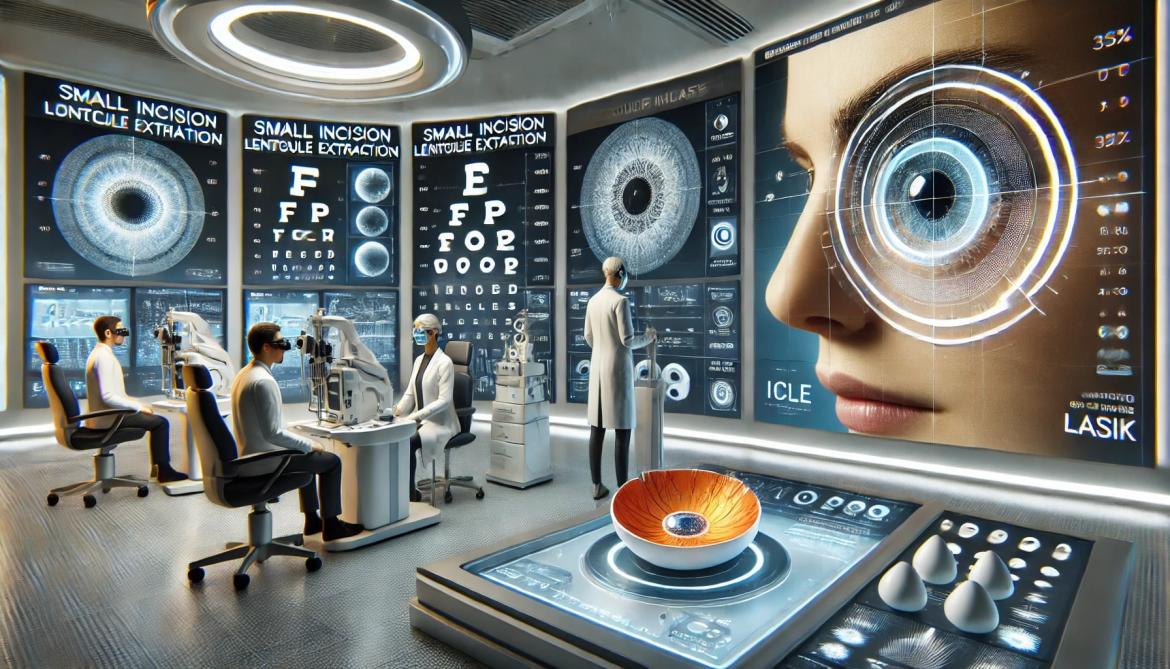Beyond Glasses and Contacts: Emerging Trends in Vision Correction

Introduction
For many years, glasses and contact lenses have been the primary solutions for correcting vision problems. However, recent advancements in eye care have introduced new and innovative options for vision correction. This blog explores the emerging trends in vision correction beyond traditional glasses and contacts, offering insights into the latest technologies and treatments.
Laser-Assisted In Situ Keratomileusis (LASIK)
LASIK is a well-known and widely performed vision correction procedure. It uses a laser to reshape the cornea, correcting refractive errors such as myopia (nearsightedness), hyperopia (farsightedness), and astigmatism. LASIK offers quick recovery times and high success rates, making it a popular choice for those seeking freedom from glasses and contacts.
Small Incision Lenticule Extraction (SMILE)
SMILE is a newer laser vision correction technique that involves creating a small lenticule (a thin disc of tissue) within the cornea, which is then removed through a tiny incision. This minimally invasive procedure offers several advantages, including a quicker recovery time, less discomfort, and a reduced risk of dry eyes compared to LASIK.
Implantable Collamer Lenses (ICL)
ICL involves implanting a custom-made lens inside the eye, between the iris and the natural lens. This procedure is suitable for individuals with high degrees of myopia or those who are not candidates for LASIK or SMILE. ICLs offer excellent visual quality and can be removed or replaced if needed.
Corneal Inlays
Corneal inlays are small devices implanted into the cornea to improve near vision, primarily for those with presbyopia (age-related farsightedness). One popular option is the Kamra inlay, which uses a pinhole effect to enhance focus and provide clearer near vision. This procedure is quick and typically involves minimal recovery time.
Wavefront-Guided LASIK
Wavefront-guided LASIK is an advanced version of traditional LASIK that uses detailed measurements of the eye’s unique imperfections to guide the laser treatment. This personalised approach can result in sharper vision and a reduced risk of night vision issues or glare.
Orthokeratology (Ortho-K)
Ortho-K involves wearing specially designed contact lenses overnight to temporarily reshape the cornea, providing clear vision during the day without the need for glasses or contacts. This non-surgical option is particularly popular among athletes and those with active lifestyles.
Conclusion
The field of vision correction is continuously evolving, offering patients a range of innovative options beyond traditional glasses and contacts. Whether through advanced laser procedures, implantable lenses, or other cutting-edge technologies, individuals now have more choices than ever to achieve clear vision and improve their quality of life. Consulting with an experienced ophthalmologist can help determine the best vision correction option based on individual needs and preferences.